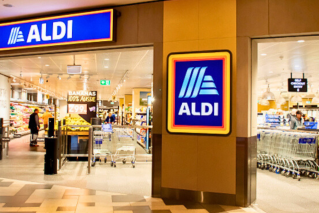The big banks are either priced for Armageddon, or are the buy of the year


The dividend yields on bank stocks have rarely been higher. Photo: Getty
The stock market is trying to tell us something about the Big Four banks: there are hard times ahead for them, or they are the bargain buy of the year.
Australians love bashing the Big Four, yet they remain cornerstones of our financial system, our stock market and most individuals’ superannuation funds.
The “SMSF Army” – those with self-managed superannuation funds – in particular, tend to be overweight in bank stocks, loving the income stream that comes from their big dividends. Bank dividends are front and centre of the current franking credit refund debate.
Those dividend yields have rarely been bigger – so big that you have to wonder what’s going on with market psychology and the perceived threats to the banks.
For example, how would you like an investment in an institution as relatively strong and reliable as NAB that pays a dividend offering a pre-tax yield of 11.27 per cent for an Australian resident? Banks’ term deposit interest rates are barely a fifth of that.
I took a snapshot of the Big Four share prices on Thursday afternoon and worked out the effective pre-tax yield of their latest annual dividend.
Made with Visme Infographic Maker
When dividend yields are that high, it tends to mean the stock market is betting on the company’s profits falling and dividends being reduced, or at least the suspicion that the company won’t be able to grow its profit much and, therefore, offers little chance of a higher share price down the track.
The market pays a premium for companies that have strong growth prospects, growth that will continue to boost the share price. It’s a trade- off between share price growth and dividend yield.
The market is right more often than not – but it also gets it wrong from time to time, and an individual investor’s needs can be different from those of the big institutional investors who dominate pricing.
The amount banks have been paying in dividends has been fairly steady, but their share prices have been on a downward trend over the past couple of years, as the market thinks the end of the housing boom, tougher prudential standards, slower economic growth, a more uncertain international climate and the fallout from the financial services royal commission – particularly tougher lending standards and restitution payments – will hurt profits.
As the share prices come down but dividend payments stay the same, the yield they represent has been rising.
But at this point of the game, if maximising regular income is particularly important and you don’t care much about share price movements, those fat dividends are powerfully attractive.
For people trying to get the most income from their savings, what matters most now is how sustainable those dividend payments are. So far, dividends have been maintained despite the extra costs from the royal commission – legal fees, compensation payments, potentially fines, reduced credit growth – knocking a few per cent off the banks’ profits.
But some stock brokers have been predicting dividend cuts. That’s what the market has priced in.
For example, Morgan Stanley in February said there was a risk that NAB could cut its dividend by 16 per cent this year, from the current $1.98 a share to $1.66.
(Such things have happened before. In 2009 as the fallout from the GFC hit, Westpac cut its dividend by 20 per cent – but that did take all the turmoil of the GFC. The stock market had priced in the cut many months before, even while Westpac’s CEO at the time, Gail Kelly, was denying it would happen.)
What would Morgan Stanley’s forecast dividend cut end up meaning? A fully-franked $1.66 dividend would attract franking credits of 71 cents, making a fully franked-up pre-tax dividend of $2.37. That would represent a pre-tax yield of 9.44 per cent on a share bought for $25.11 – which is still pretty rich. By comparison, a total return on investments of about 7 per cent in a low-growth, low-interest rate environment is considered to be good.
If Morgan Stanley is wrong and the NAB can maintain its dividend, or not trim it by as much, the pre-tax dividend will prove very rich indeed and the share price should rise as well.
Some perspective on the scenario was provided by Morgan Stanley. When it made the prediction, NAB shares were trading around $24.40 – and the broker still expected the price to rise to $25.50. That reflects the potential bad news already being priced in.
By way of disclosure, the Pascoe family super fund holds shares in all the big banks. The fund is a long-term investor, doesn’t “trade” and is in the fortunate position of not needing to eat into capital, all needs being met out of dividend and interest income. Some of the bank shares were purchased when the share prices were higher and the yields were lower, but nonetheless more attractive than most. The fund bought more bank shares last month, figuring that the yields would still be very profitable even if dividends were trimmed. And, in the longer term, the banks tend to reflect the overall strength of the Australian economy, about which I remain optimistic. So, in that longer term, hopefully, the share prices should take care of themselves.








